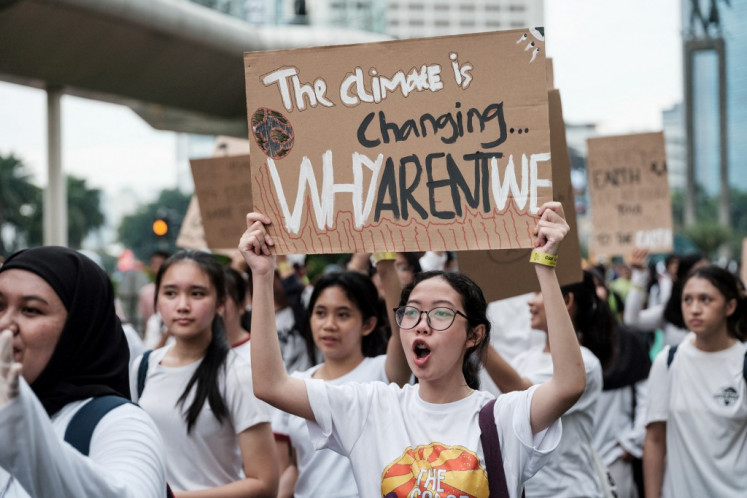Reforestation project brings back water to C. Java villages
Ten years ago, Geneng village in Wonogiri, Central Java, was one of 40 villages in the province that suffered from a clean water crisis each year during the dry season
Change Size

T
en years ago, Geneng village in Wonogiri, Central Java, was one of 40 villages in the province that suffered from a clean water crisis each year during the dry season.
“Our water tank at home was always empty by the first month of the dry season,” said Geneng resident Martono, 64.
Villagers had to walk 5 kilometers to find a source of water and could bring back only two bucketfuls with them.
Gendol Hill, which is located behind the village, used to be a reliable source of water for the villagers. But environmental degradation caused by fires and illegal logging had cost them Gendol River, which dried out and stopped flowing for some time.
However, things have changed. The water crisis has ended and the villagers have more than enough water during the dry season, when most of the regency suffers from drought.
Other villages nearby, including Conto, Krandengan, Sugihan and Domas, are also enjoying the water surplus. At least 5,000 people now have access to clean water thanks to a pipeline system measuring thousands of meters long that connects the slopes of Gendol Hill to their homes.
“Now we just turn on the tap and water comes out. We have to pay a monthly bill, but at least we don’t have to walk up the hill to get clean water,” said Geneng resident Darminto.
It was Sadiman, 68, another villager from Geneng, who initiated a reforestation project by planting banyan trees in 1996. Sadiman, who makes a living tapping rubber from pine trees, spent 20 years hiking the hill while planting the banyan trees, one by one.
“All I knew was that banyan trees can preserve water. I just wanted to revive the source of water on the hill so that the villagers will no longer suffer because of drought,” he said.
There are now around 4,000 banyan trees and 7,000 fruit trees spread across 100 hectares of land.
However, Sadiman will not take all the credit for himself.
“I didn’t grow every single tree by myself. A local plantation company, Korindo, helped provide the seeds,” he said.
In November 2015, Korindo provided 7,000 seeds, including those of banyan, durian, and avocado trees, he added.
“After three years, we went back to see the progress and the results were outstanding. We are thinking of turning the village into a destination for agritourism,” Korindo Foundation secretary-general Yi Sun-hyeong said recently.
The company is also exploring a potential cooperation with a local NGO, the Hijau Bumi movement, to develop agritourism in Bulukerto district.









